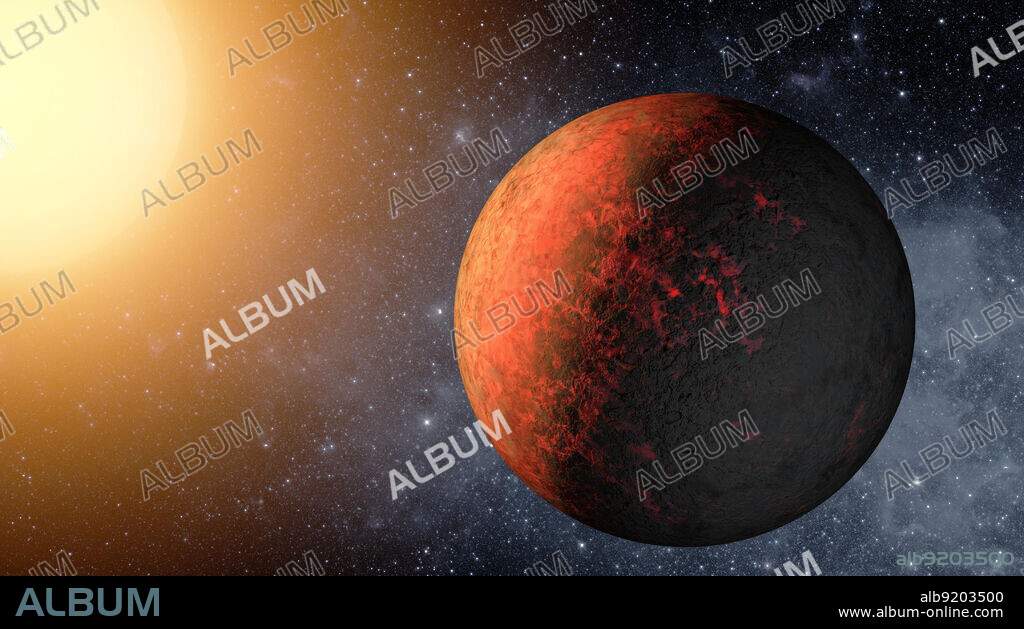alb9203500
Kepler-20e, Smallest Exoplanet

|
Ajouter à une autre Lightbox |
|
Ajouter à une autre Lightbox |



Avez-vous déjà un compte? S'identifier
Vous n'avez pas de compte ? S'inscrire
Acheter cette image.
Sélectionnez l'usage:

Titre:
Kepler-20e, Smallest Exoplanet
Légende:
Voir la traduction automatique
Artist Concept. Kepler-20 star system, where NASA's Kepler mission discovered the first Earth-size planets around a star beyond our own. The system is jam-packed with five planets, all circling within a distance roughly equivalent to Mercury's orbit in our solar system. The two Earth-size planets, which are presumably rocky, are Kepler-20e and Kepler-20f, and the three larger gas planets are Kepler-20b, Kepler-20c and Kepler-20d. The arrangement of the planets from the closest to its star to the farthest is: b, e, c, f and d, with the ordering of the letters reflecting the time at which the planets were initially discovered. The Kepler-20 system is unusual in that the sizes of the planets alternate, with the closest in being large, followed by a small planet, and then continuing on with the planets switching back and forth in size. Astronomers are intrigued by this configuration because it completely differs from that of our solar system, where there is a clear separation between the four small, rocky inner planets, and the four giant, gaseous outer planets.
Crédit:
Album / NASA/Ames/JPL-Caltech / Science Source
Autorisations:
Modèle: Non - Propriété: Non
Questions sur les droits?
Questions sur les droits?
Taille de l'image:
Pas disponible
Taille d'impression:
Pas disponible
Mots clés:
ARTISTE • ARTISTEL • ARTSTE • ASTRONOMIE • ASTRONOMIE: PLANETES • COSMOS • ILLUSTRATION • PLANETE • PLANÈTES • SCIENCE: ASTRONOMIE
 Pinterest
Pinterest Twitter
Twitter Facebook
Facebook Copier le lien
Copier le lien Email
Email
